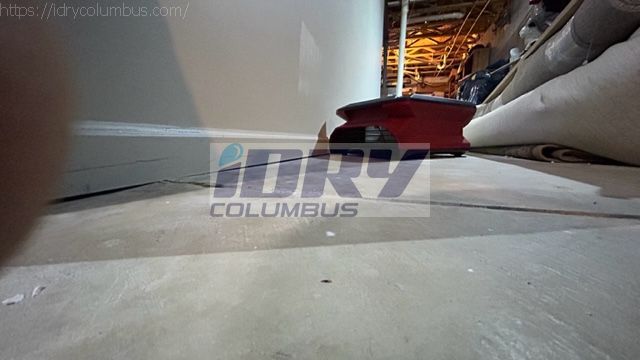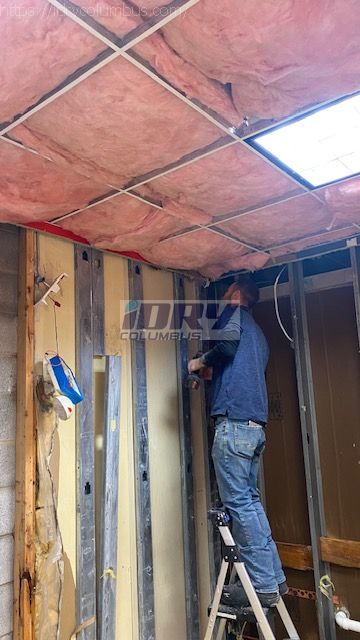Water Damage Costs & Insurance Guide | iDry Columbus
Water damage can be both emotionally and financially taxing. As you grapple with the immediate aftermath, understanding the financial implications becomes paramount. iDry Columbus presents a comprehensive guide designed to demystify the costs associated with water damage restoration and the role of insurance in covering these expenses.
From breaking down typical service costs to delving into the intricacies of insurance claims, this guide aims to provide clarity and guidance. We’ll also touch upon financing options and tips to ensure you maximize your insurance benefits.
With the right knowledge, you can navigate this challenging time with confidence, ensuring that your property is restored without undue financial strain.
Have a Question? Need Advice? Contact Us Today!
24/7 Emergency Response Services
Licensed, Insured & Dedicated
Free Estimates – Xactimate™ Technology






Overview of Water Damage Restoration Costs
Understanding the potential costs associated with water damage restoration is crucial for homeowners and businesses alike. The extent of damage, the size of the affected area, and the type of restoration required can all influence the final bill. In this section, we’ll provide a concise overview of the typical expenses you might encounter:
- Initial Assessment: Before any work begins, professionals will assess the extent of the damage. This initial evaluation can sometimes come with a fee, depending on the company.
- Labor Costs: The bulk of your expenses will often come from the labor involved in the restoration process. This includes water extraction, drying, dehumidification, and any necessary repairs or replacements.
- Equipment and Materials: Specialized equipment, such as industrial fans, dehumidifiers, and water extractors, may be used. Additionally, materials for repairs, like drywall or flooring, will add to the costs.
- Mold Remediation: If water damage has led to mold growth, additional steps will be required for mold removal, which can increase the overall cost.
- Additional Services: Depending on the severity of the damage, other services like carpet cleaning, furniture restoration, or odor removal might be necessary.
It’s essential to get a detailed estimate from your chosen mitigation company to understand these costs better. For a more in-depth breakdown and factors that can influence these costs, click here to explore our detailed guide on water damage restoration costs.

Understanding Insurance Coverage for Water Damage
Insurance plays a pivotal role when dealing with water damage. However, navigating the intricacies of insurance policies can be daunting. It’s essential to understand what your policy covers, the types of water damage included, and any potential exclusions.
- Types of Coverage: Not all water damage is treated equally in the eyes of insurance providers. While sudden water damage incidents like burst pipes might be covered, gradual damage due to negligence or wear and tear often isn’t.
- Claim Process: Initiating a claim requires timely reporting and documentation. Understanding the steps involved, from initial reporting to claim approval, can expedite the process and ensure you receive the benefits you’re entitled to.
- Exclusions: It’s crucial to be aware of what your policy doesn’t cover. For instance, damage due to flooding often requires a separate flood insurance policy.
- Policy Limits: Every policy has its limits. Knowing these can help you gauge if additional coverage or riders are necessary for your property.
- Deductibles: Before insurance kicks in, there’s usually a deductible to be met. Being aware of this amount can help you budget for unexpected events.
To delve deeper into the nuances of insurance coverage for water damage and ensure you’re adequately protected, click here to explore our comprehensive guide on understanding insurance coverage for water damage.
Deductibles and Premiums: What You Need to Know
When it comes to insurance, two terms often come to the forefront: deductibles and premiums. These play a crucial role in determining your out-of-pocket expenses and the overall cost of your insurance policy:
- Understanding Deductibles: A deductible is the amount you pay out-of-pocket for repairs before your insurance coverage begins. It’s vital to choose a deductible you can afford, as a higher deductible often means a lower premium, but more initial costs during a claim.
- Premiums Explained: This is the amount you pay to maintain your insurance policy, usually monthly or annually. Various factors, such as property value, location, and chosen deductible, influence the premium amount.
- Balancing Act: Striking the right balance between deductible and premium is essential. While a lower premium might seem attractive, it often comes with a higher deductible, which could strain finances during an emergency.
- Discounts and Savings: Many insurance providers offer discounts for safety measures, like installing water sensors or maintaining a claim-free record. Being aware of these can significantly reduce your premium.
- Annual Review: As your property’s value, condition, and surrounding factors change, so should your insurance. Regularly reviewing and adjusting your policy ensures you’re neither overpaying nor underinsured.
Financing and Payment Plans for Water Damage Services
Water damage to your carpets can sometimes be an unexpected expense, and not everyone is prepared for the immediate financial burden it can impose. Recognizing this, many service providers and financial institutions offer tailored financing and payment plans to ease this strain.
- Flexible Financing Options: Depending on the severity of the damage and the restoration required, costs can vary. Flexible financing options allow property owners to spread these costs over a longer period of time, making the process more manageable.
- Interest Rates and Terms: It’s essential to understand the interest rates associated with any financing option. While some might offer zero or low interest rates for initial periods, rates can increase over time. Always read the fine print.
- Payment Plans: Some restoration companies provide in-house payment plans, allowing clients to pay in installments. This can be especially helpful for those without insurance coverage or facing high deductibles.
- Assistance Programs: In certain situations, especially following natural disasters, governmental and non-profit organizations might offer financial assistance or low-interest loans to affected individuals.
- Benefits of Financing: Beyond immediate financial relief, financing can also allow property owners to opt for more comprehensive restoration services, ensuring long-term property health and value preservation.

Maximizing Your Insurance Claim: Tips & Tricks
Navigating the intricacies of insurance claims after water damage can be daunting. However, with the right knowledge and approach, you can ensure that you receive the maximum benefit from your insurance policy:
- Documentation is Key: Always document the damage extensively. Take clear photographs and videos of affected areas, itemizing any damaged property. This will serve as evidence when filing your claim and can significantly influence the claim’s outcome.
- Immediate Reporting: Report the damage to your insurance provider as soon as possible. Delays can sometimes affect the claim’s validity or the amount you can claim.
- Understand Your Policy: Familiarize yourself with the specifics of your insurance policy. Know what is covered, what isn’t, and any limits or deductibles that apply. This knowledge can help you strategize your claim more effectively.
- Professional Assessments: Consider getting an independent assessment of the damage. While insurance companies will send their adjusters, an independent opinion can sometimes highlight discrepancies or additional areas of concern.
- Negotiation: Remember, the first offer from an insurance company might not always be the final one. If you believe the proposed amount doesn’t cover your damages adequately, don’t hesitate to negotiate or seek a second opinion.
- Seek Expert Advice: Professionals in the water damage restoration industry often have extensive experience dealing with insurance claims. Their insights can be invaluable in ensuring you get the most out of your claim.
For a detailed exploration of strategies, insights, and expert advice on maximizing your insurance claim after water damage, click here to read our in-depth guide on Tips & Tricks to Maximize Your Insurance Claim.
The Role of Restoration Experts in Insurance Claims
Navigating the complexities of insurance claims post-water damage can be daunting. Professional restoration companies play a pivotal role in this journey, bridging the gap between damage repair and insurance procedures. Dive into the multifaceted roles these experts undertake, from damage assessment to liaising with insurance adjusters. Understand how their expertise not only ensures top-notch property restoration but also streamlines the insurance claims process, maximizing your compensation.
Click here to read more about the Synergy Between Restoration Pros and Insurance Claims →

FAQs: Common Questions about Costs and Insurance
The realm of water damage restoration costs and insurance intricacies can often lead to a plethora of questions. It’s natural for property owners to seek clarity on these matters, especially when faced with unexpected water damage:
What does my insurance policy cover? While policies vary, most standard homeowner’s insurance covers sudden and accidental water damage but may exclude issues like…
How much will water damage restoration cost me out-of-pocket? The answer depends on the extent of the damage, your insurance coverage, and your…
Are there financing options available for water damage services? Many restoration companies offer financing plans, especially for costs not covered by…
How can I ensure a smooth insurance claim process? Prompt reporting, thorough documentation, and open communication with your…
What if my claim is denied or I’m offered less than expected? You have the right to understand the reasons, seek a second opinion, or even…
For comprehensive answers to these and many other frequently asked questions about water damage restoration costs and insurance, click here to explore our detailed FAQ section.
Water damage, while unexpected and often overwhelming, doesn’t have to drown you in confusion and uncertainty. With the right knowledge and resources, you can navigate the financial aspects of restoration with confidence. From understanding the intricacies of insurance coverage to exploring financing options, being informed is your best defense against unforeseen expenses.
At iDry Columbus, we’re committed to not only providing top-tier restoration services but also to ensuring our clients are well-equipped with the information they need. We understand the stress and challenges that come with water damage, and we aim to make the recovery process as smooth and transparent as possible.
As you delve deeper into our guide, remember that every situation is unique. Always consult with professionals, be it in restoration services or insurance, to get advice tailored to your specific circumstances. With preparation, knowledge, and the right support, you can turn the tide on water damage and its associated costs.
Local Resources for Property Damage and Security
Explore these local resources in Columbus, Ohio, to find valuable information and assistance regarding property damage and security. These resources provide guidance on fire safety, crime prevention, consumer protection, building codes, and more. Click on the links below to access helpful information and resources to protect and secure your property:
Columbus Division of Fire: Obtain fire safety tips, prevention strategies, and emergency preparedness information to safeguard your property and loved ones. Click here to visit their website.
Columbus Police Department: Access resources on neighborhood safety, crime prevention, and security tips to enhance the protection of your property. Click here to visit their website.
City of Columbus Code Enforcement: The City of Columbus Code Enforcement offers information on building codes, property maintenance standards, and reporting violations. Click here to visit their website.
- Ohio Environmental Protection Agency: The Ohio Environmental Protection Agency provides resources on environmental protection and compliance, including information on hazardous materials and waste management.


